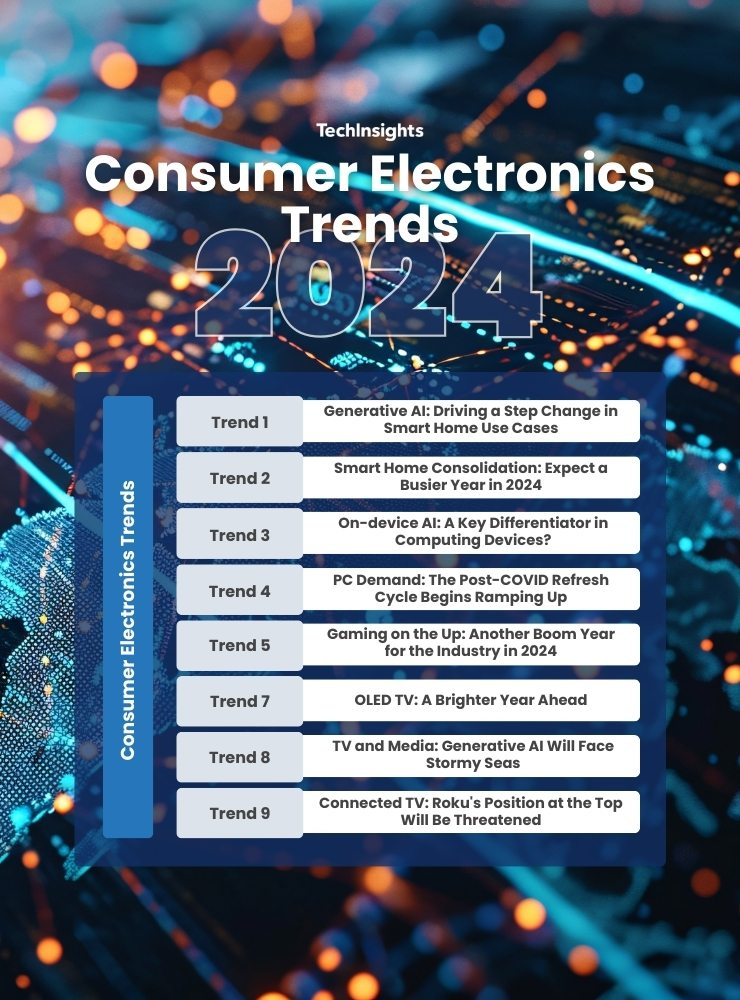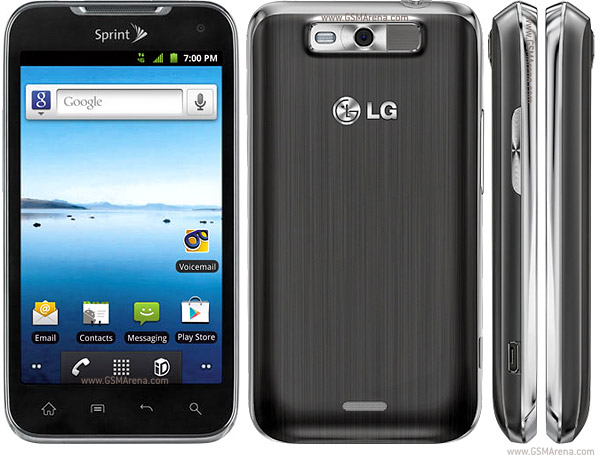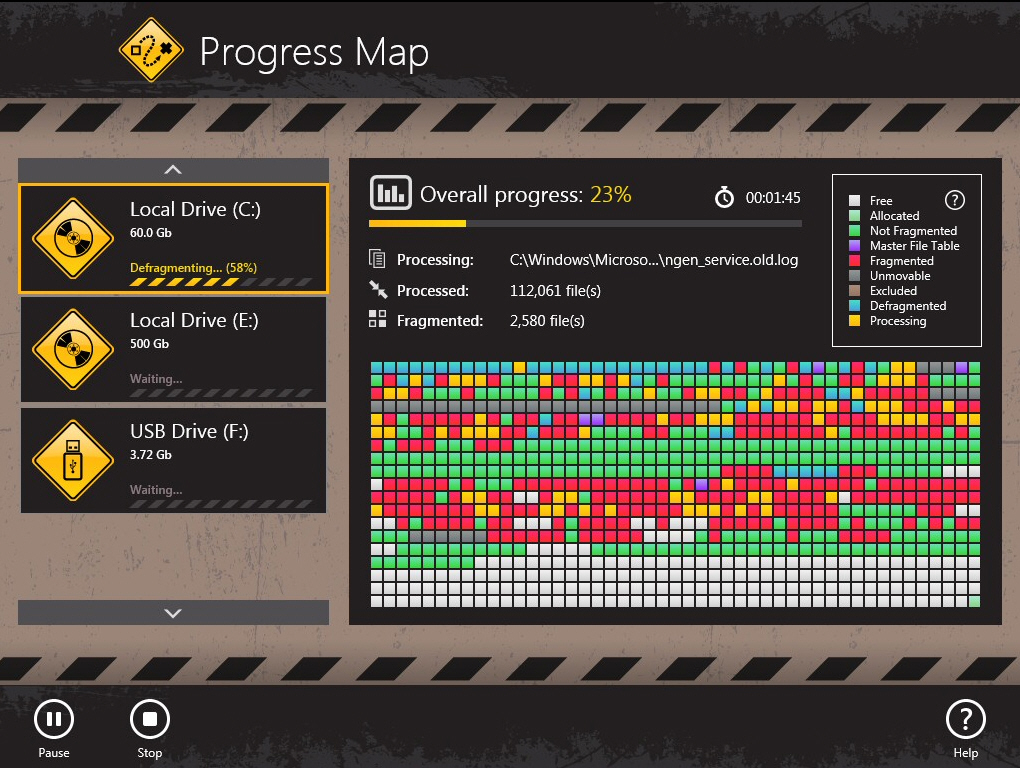Consumer Electronics Trends are rapidly evolving, shaping the future of how we interact with technology. At CES 2023, we witnessed an exciting array of innovative gadgets, from stunning 4K TVs to advanced smartphones technology that promises to change our everyday experiences. The introduction of glasses-free 3DTVs and the rise of connected cars highlight the shift towards smarter and more immersive devices. As consumer expectations increase, manufacturers are responding with products that not only enhance performance but also prioritize seamless connectivity and user engagement. Staying informed about these trends is essential for consumers looking to navigate the fast-paced electronics landscape.
The landscape of technology is shifting dramatically, and understanding the latest developments is crucial for both consumers and industry observers. Innovations unveiled at trade shows like CES 2023 showcase the next generation of high-definition displays, such as 4K technology, along with cutting-edge smartphones that offer improved features for a seamless user experience. Additionally, the emerging field of automotive technology reveals how connected cars are shaping future mobility solutions alongside impressive entertainment offerings like glasses-free 3DTV. By keeping abreast of these advancements, consumers can better anticipate the devices that will enhance their lives, ensuring they remain at the forefront of electronic innovation.
Emerging Consumer Electronics Trends
The ongoing evolution of consumer electronics has been a notable theme at events like CES 2023, where the focus was on showcasing groundbreaking gadgets and technologies set to redefine our digital experiences. From ultra-high-definition 4K TVs to advanced smartphones with cutting-edge technology, the trends highlight a significant shift towards smarter, more connected devices. The prominence of gadgets that boast enhanced connectivity and functionality signals a shift in consumer preferences as well. With every year that passes, the expectation for consumer electronics to not just be functional but intelligent has skyrocketed.
Additionally, the opportunity for creating ecosystems of interconnected gadgets is more pronounced than ever. Products like 4K TVs that integrate seamlessly with smartphones and tablets allow users to access content with unprecedented ease. This connectivity trend touches on various facets of our lives, including the anticipated rise of connected cars that will further blur the lines between home and mobile technology. These emerging consumer electronics trends indicate a transformative period that could render older technology obsolete as innovation accelerates.
The Rise of 4K TVs and Their Impact
One of the most exciting advancements showcased at CES was the surge of 4K TVs penetrating the consumer market. With resolutions surpassing the traditional 1080p, 4K TVs double the pixel count and provide unmatched sharpness and clarity, effectively redefining our viewing standards. Manufacturers are investing heavily in this technology, anticipating that once consumers experience the pixel density and vibrant colors of 4K content, conversion will be necessary for many. The industry is not without challenges, including new equipment for production and distribution, but the fascination around this technology is palpable.
Furthermore, the integration of advanced features such as built-in smart capabilities ensures that 4K TVs are not just displays but hubs for various media applications. This innovation in televisions may lead to even more sophisticated viewing experiences, as consumers will have access to a broad array of streaming services directly through their devices. The future points towards a holistic approach, where television viewing isn’t just about watching shows but involves a dynamic interaction with the content created specifically for high-resolution formats.
The Evolution of 3DTV Technology
The reimagining of the 3DTV experience was a highlight at CES, particularly with the increasing prevalence of models that promise glasses-free viewing. This technological advancement could potentially eliminate one of the major hurdles that have plagued 3DTV adoption. By leveraging 4K resolution technology, manufacturers like Sony have demonstrated prototypes of autostereoscopic displays that keep the immersive quality while enhancing viewing comfort. The 3D imagery seen at this year’s show represented a leap forward in providing realistic visuals without the cumbersome requirements of special glasses.
As content creators begin producing films and shows optimized for this technology, the interest in glasses-free 3DTVs is expected to rise, leading to broader adoption in households. The blending of reality and entertainment in a seamless manner echoes a significant consumer preference that emphasizes comfort and quality. With the potential of making 3D experiences accessible through advancements in display technology, the future of home entertainment is navigating towards more immersive and user-friendly options.
The Smart TV Revolution
At CES, the concept of Smart TVs took center stage, with brands revealing increasingly sophisticated devices capable of connecting seamlessly with various applications and services. The evolution of these TVs to include connectivity features, such as running apps and establishing links with smartphones and tablets, underscores the shift towards integrated entertainment ecosystems. Panasonic’s interface, which allows images to be flicked from tablets to TVs, illustrates how consumer electronics trends are evolving toward a more interconnected user experience.
As technology continues to advance, the next generation of Smart TVs is likely to incorporate artificial intelligence and machine learning capabilities that adapt to user preferences. This shift will not only improve content recommendations but could also lead to the development of interactive and personalized viewing experiences that cater to individual viewer habits. The enhancement of Smart TV features is an essential movement in providing consumers with a truly connected experience that integrates entertainment into their daily lives.
Connected Cars: A New Automotive Era
The automotive world is undergoing a remarkable transformation, highlighted at CES with the expansion of the Auto pavilion showcasing connected cars. Gone are the days when the focus was primarily on sound systems; instead, manufacturers like Audi and Ford displayed vehicles equipped with high-tech features that cater to both functionality and driver comfort. The trend towards connected cars emphasizes safety and convenience, utilizing technologies such as advanced infotainment systems and digital displays to enhance the driving experience.
With the integration of mobile connectivity, these vehicles are designed to interact with drivers’ devices and provide real-time information, which enhances navigation and entertainment features. The future of connected cars looks promising with innovations expected to incorporate smart technology, from controlling in-car settings via smartphones to utilizing AI for predictive maintenance and safety alerts. This evolution is not just a mere upgrade in functionality; rather, it marks an essential progression towards safer and more intuitive driving experiences.
The Future of In-Car Infotainment Systems
In recent showcases, the evolution of automotive infotainment systems has captured significant attention, particularly with cars now equipped with multi-functional touchscreen displays. The Tesla Model S, with its striking 17-inch display serving as the control center, is a perfect example of how tech-savvy designs are enhancing usability and interactivity in vehicles. Features that allow users to perform multiple tasks—like adjusting climate settings and accessing navigation services—without diverting attention from driving reflect a significant leap forward in automotive technology.
The introduction of heads-up displays (HUDs) is another fascinating development in the realm of in-car technologies. By projecting essential information directly in the driver’s line of sight, HUDs enhance situational awareness while minimizing the distraction of looking away from the road. As these systems continue to evolve, integrating voice control and gesture recognition, the future infotainment systems aim to blend safety and convenience, prioritizing the driver’s engagement in a smart and efficient manner.
The Rise of Touchscreen Laptops
As the demand for versatile computing devices increases, the emergence of touchscreen laptops signifies a pivotal shift in personal computing. Lenovo’s innovative “Yoga” laptop highlights this trend, showcasing a device that can transition from traditional laptop mode to tablet mode. With the introduction of touch-friendly operating systems like Windows 8, these laptops are becoming increasingly appealing to users who seek flexibility and ease of use in their devices.
The integration of touch capabilities doesn’t negate the use of traditional input methods; rather, it enhances the user experience by allowing for multi-faceted interactions. Users can tap, swipe, and pinch to navigate, providing a richer interaction with software applications. This adaptability in design suggests that touchscreen laptops may soon become the norm, especially as productivity software continues to optimize for tactile interactions, making daily tasks more efficient and engaging.
Next Generation Smartphones: Streaming and High Res Displays
In an ever-evolving landscape, smartphones remain a pivotal focus in consumer electronics, particularly with the anticipated rollout of devices featuring high-resolution displays and 4G LTE connectivity. The unveiling of smartphones at CES revealed models that surpass current standards and can effortlessly stream HD content over advanced networks. This capability is designed to delight users who crave seamless access to multimedia content, complete with crystal-clear resolutions that will transform how we consume visual media.
As manufacturers strive to meet the expectations of tech-savvy consumers, significant improvements in battery technology will be essential to support HD streaming demands. The race towards producing more efficient smartphones with powerful processing capabilities, high-resolution displays, and enhanced battery life ensures that these devices will remain critical in our daily lives. As the market continues to evolve rapidly, consumers can expect innovative features and functionalities that align with their demands for high-quality mobile experiences.
Frequently Asked Questions
What are the latest consumer electronics trends for 4K TVs showcased at CES 2023?
At CES 2023, the trend towards 4K TVs continues to grow stronger, with many manufacturers presenting advanced models that offer stunning picture quality at 3840 x 2160 resolution. The transition to 4K signifies a significant leap from Full HD, enhancing the viewing experience with crisper images and smoother motion. This year’s innovations also include improved connectivity and smart features that integrate seamlessly with other devices.
How is smartphones technology evolving in relation to consumer electronics trends?
Smartphones technology is at the forefront of consumer electronics trends as showcased at CES 2023. New models feature high-resolution displays surpassing traditional Retina screens and support for HD streaming over 4G LTE. Additionally, innovative designs and faster processors are becoming standard, allowing users to enjoy more immersive experiences with apps and multimedia.
What is the future of connected cars as highlighted in consumer electronics trends?
The future of connected cars is a pivotal aspect of consumer electronics trends observed at CES 2023. Automakers like Mercedes Benz and Audi unveiled high-tech, smart vehicles equipped with advanced infotainment systems, touchscreen displays, and heads-up displays (HUDs). These innovations enhance connectivity, allowing drivers to access navigation, entertainment, and crucial vehicle information, all while keeping their focus on the road.
What advancements were seen in glasses-free 3DTV technology at CES 2023?
CES 2023 highlighted significant advancements in glasses-free 3DTV technology, particularly with Sony’s prototype 3DTV utilizing a 4K high-resolution display. This development allows for a more engaging viewing experience without the need for special glasses, overcoming previous limitations like restricted viewing angles and image distortion, aligning with consumer electronics trends toward more user-friendly 3D experiences.
How are TVs becoming smarter in line with consumer electronics trends?
TVs are becoming increasingly smarter, a key consumer electronics trend presented at CES 2023. New smart TVs now feature wireless connectivity, enabling them to run apps and connect seamlessly with smartphones and other devices. This evolution includes the ability to share content effortlessly, thereby enhancing the interactive viewing experience and making TVs central to the smart home ecosystem.
| Trend | Description |
|---|---|
| Future TVs Will Be Sharper | 4K resolution TVs are set to become the new standard, offering double the resolution of Full HD, significantly enhancing viewing experiences. |
| 3DTV Will Use Passive Glasses or No Glasses at All | LG’s 4K passive 3DTV technology allows for smoother images without the issues of previous models, improving the viewing experience. |
| 4K Will Make Glasses-Free TV Acceptable | Sony’s prototype autostereoscopic 3DTV showcases the potential for quality glasses-free viewing experiences thanks to enhanced 4K resolution. |
| TVs Will Be Connected and Smart | Next-gen Smart TVs will have advanced connectivity features, allowing them to run diverse apps and connect seamlessly with other devices. |
| High Tech, Connected Cars Are on the Way | The auto industry is transitioning towards smart vehicles, with a focus on technology integration in vehicle displays and infotainment systems. |
| Next Wave in Auto Consoles and Infotainment Systems | High-tech touchscreens and heads-up displays are becoming standard in vehicles, enhancing driver interaction and information access. |
| Laptops With Touchscreens and Windows 8 | Flexible laptops with touchscreen capabilities, such as Lenovo’s Yoga, are poised to adapt to Windows 8’s touch functionalities. |
| Smartphones Will Have High Res Displays and Stream HD over 4G LTE | New smartphones showcased at CES are expected to feature high-resolution displays capable of streaming HD content at high speeds. |
Summary
Consumer Electronics Trends are rapidly evolving to include a variety of innovative technologies that enhance user experience and connectivity. The shift towards sharper 4K resolution displays, both for televisions and portable devices, signifies a major leap in visual quality. Additionally, the integration of smart technologies into cars and home entertainment systems reflects a broader trend towards interconnected devices that prioritize user convenience. This combination of advancements in display technology, user interaction, and seamless connectivity encapsulates the essence of the upcoming consumer electronics landscape.



